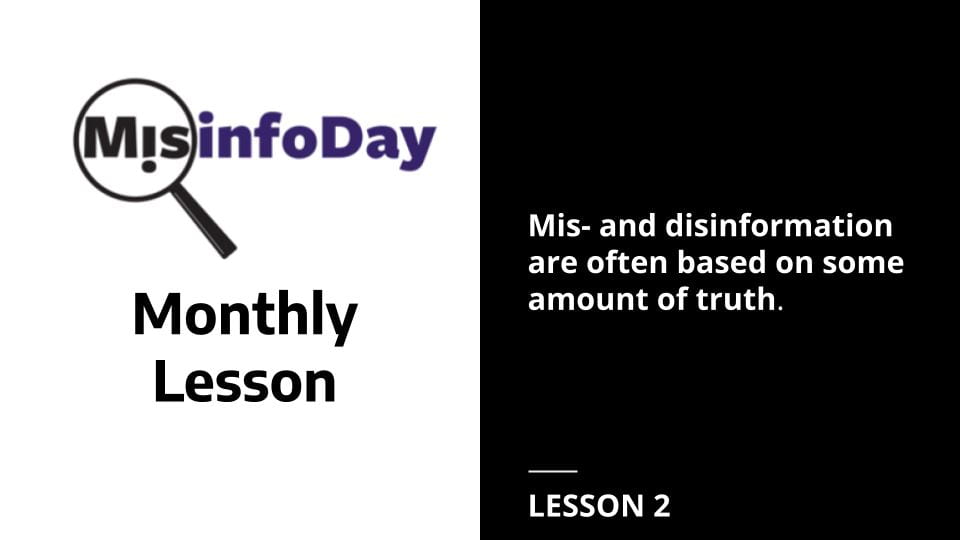Leading up to MisinfoDay 2022, the UW Center for an Informed Public, in partnership with the WSU Edward R. Murrow College of Communication, has launched a series of MisinfoDay Monthly video lessons for secondary students and educators.
In our October MisinfoDay Monthly video, Erika Tran, a junior at Interlake High School in Bellevue, Washington talks with Kolina Koltai, a postdoctoral fellow in the UW Center for an Informed Public who studies vaccine misinformation, about how mis- and disinformation are often based on some amount of truth.
Questions with time stamps:
- 1:11: What does it mean for mis- and disinformation to be based on some amount of truth?
- 4:08: What are the dangers of having misinformation based around truth instead of purely misleading information?
- 6:58: How would you minimize the misinformation spread when people have good intentions?
- 10:54: If mis- and disinformation are often built around at least some truth, how do well-meaning organizations or institutions establish credibility over organizations with more questionable motives?
Scroll down to watch the video and access related classroom resources.
Sign up to receive future MisinfoDay Monthly lessons and other updates here. Each lesson will feature a video conversation between a high school student and a researcher along with related resources for your classroom.
Related Resources for Educators: Misinformation is often based on some amount of truth
Five Types of Misinformation poster and lesson
This lesson and accompanying classroom poster teach students about the five types of misinformation identified by the News Literacy Project. See the poster to view the five types and use the “Misinformation” lesson to give students practice identifying them. From the News Literacy Project
Understanding the Landscape of Information Disorder
In this video, Jacquelyn Mason helps students understand the misinformation landscape. See the five-minute clip from 4:58–9:48 for an overview of the seven types of mis- and disinformation identified by First Draft News and examples of each. From MisinfoDay 2020
How to Use MisinfoDay Monthly Materials
Have your own “monthly MisinfoDay.” Choose a day each month to let students explore some or all of the resources. There are lots of ways to mix and match. One option for this month: start class with Erika and Kolina’s video conversation and invite students to share examples of misinformation they’ve seen that are based on a kernel of truth. Then share the types of misinformation from the News Literacy Project or First Draft News. Have students categorize their own examples or use the ones provided by the organizations. Or, discuss which types students see most, which they think can be most impactful, or which are hardest to spot.
Find the Facts Fridays. Choose a day each week to explore one of the resources at the start of class. Short on time? Choose one resource to focus on for the month and break it down into shorter warm-up activities. For example: Each Friday, introduce one or two types of misinformation to students.
Get inspired. Review the materials to level up your own understanding of the misinformation landscape and how to navigate it, then use your new knowledge to incorporate these concepts and skills into your current curriculum.




